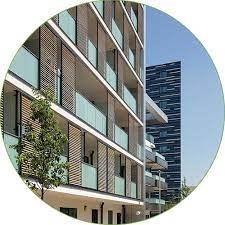Definition and Types of Ventilation
- Natural Ventilation
- Mechanical Ventilation
- Hybrid Ventilation
Principles of Ventilation
- Airflow Dynamics
- Pressure Differentials
- Thermal Buoyancy and Wind Effects
Design Considerations
- Building Layout and Orientation
- Ventilation Strategies and Systems
- Material Selection and Airflow Pathways
Ventilation Standards and Regulations
- Local and International Codes
- Indoor Air Quality (IAQ) Requirements
- Energy Efficiency Standards
Technological Innovations in Ventilation
- Smart Ventilation Systems
- Energy Recovery Ventilators (ERV)
- Demand-Controlled Ventilation (DCV)
Health and Safety Impacts
- Impact on Occupant Health and Comfort
- Mitigation of Indoor Pollutants
- Fire Safety and Smoke Control
Energy Efficiency and Sustainability
- Role of Ventilation in Energy Consumption
- Integration with Renewable Energy Sources
- Sustainable Building Practices
Case Studies and Practical Applications
- Examples of Successful Ventilation Systems
- Lessons Learned from High-Rise Building Projects
- Future Trends and Developments
The Significance of Ventilation in a High-Rise Building

Ventilation plays a crucial role in ensuring the health, comfort, and safety of occupants in high-rise buildings. Here are some key points explaining its significance:
Indoor Air Quality (IAQ)
- Health Impact: Proper ventilation helps remove indoor pollutants, allergens, and moisture, which can lead to respiratory problems and other health issues. By ensuring a constant supply of fresh air, ventilation reduces the concentration of contaminants like carbon dioxide, volatile organic compounds (VOCs), and particulate matter.
- Comfort: Adequate ventilation maintains comfortable indoor conditions by controlling temperature, humidity, and air freshness, thereby improving overall occupant well-being.
Energy Efficiency
- Reduced Energy Consumption: Efficient ventilation systems can significantly reduce the energy required for heating and cooling. Technologies like energy recovery ventilators (ERVs) and demand-controlled ventilation (DCV) optimize airflow based on occupancy and external conditions, reducing unnecessary energy use.
- Sustainable Design: Integrating ventilation with other building systems, such as heating, ventilation, and air conditioning (HVAC), and using renewable energy sources can enhance a building’s sustainability profile.
Fire Safety and Smoke Control
- Emergency Ventilation: In the event of a fire, ventilation systems play a critical role in controlling smoke spread, ensuring safe evacuation routes, and providing fresh air to occupants. Properly designed systems can help confine smoke to specific areas, reducing the risk of smoke inhalation and facilitating firefighting efforts.
- Regulatory Compliance: Adhering to fire safety codes and standards is essential for the design and operation of high-rise buildings. Effective ventilation systems are a key component of these regulations.
Thermal Comfort
- Temperature Regulation: Ventilation helps balance indoor temperatures by removing excess heat during warmer periods and retaining heat during cooler periods. This contributes to a stable and comfortable indoor environment.
- Humidity Control: Managing indoor humidity levels through ventilation prevents the buildup of moisture, which can lead to mold growth and structural damage.
Economic Benefits
- Operational Savings: Efficient ventilation systems reduce maintenance and operational costs by enhancing the performance and lifespan of HVAC systems. Lower energy consumption translates to reduced utility bills and operational expenses.
- Increased Property Value: Buildings with advanced ventilation systems and high IAQ standards are more attractive to tenants and buyers, potentially increasing the property’s market value.
Technological Advancements
- Smart Ventilation: Modern buildings increasingly incorporate smart ventilation systems that use sensors and automation to optimize airflow based on real-time data. These systems enhance IAQ and energy efficiency while providing greater control and flexibility.
- Integration with Building Management Systems (BMS): Advanced ventilation solutions can be integrated with BMS, allowing centralized monitoring and control, which enhances building performance and occupant comfort.
In summary, ventilation is a fundamental aspect of high-rise building design that impacts health, safety, comfort, energy efficiency, and overall building performance. Ensuring effective ventilation requires careful consideration of various factors and adherence to established standards and best practices.



